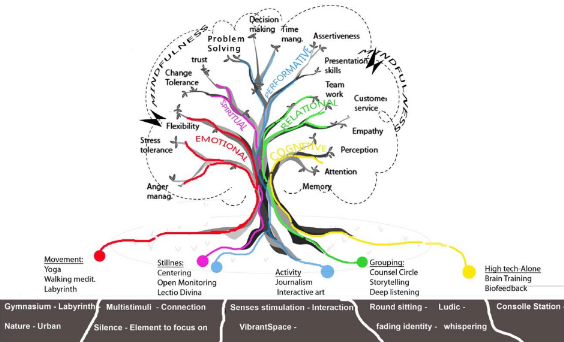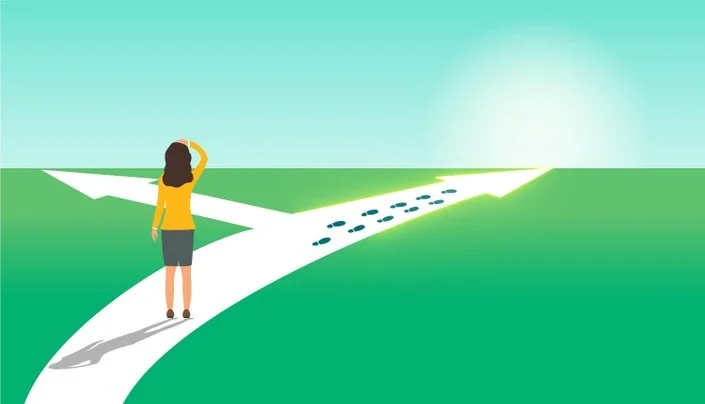Salutogenesis and Humanism in Healthcare Design
/The conference just held in Trento about the innovative outcomes of healthcare (and conscious) design was very interesting as it gave the opportunity to compare 3 centres of excellence of different times and places about the "salutogenic model", a kind of approach to care-giving which support human health and well-being rather than focusing on factors that cause disease. The Filderklinik of Stoccard, presented by professor Treichler, expression of antroposophic design (1), is an extraordinary example for achieving very high standards already back in 1975: the clinic was the first to focus the attention towards wellbeing of all the occupants of the clinic: patients, staff and visitors.
FILDERKLINIK: CHROMOTHERAPY ROOM - PHOTO BY BO WE PA ARCHITEKTEN GMBH
Filderklinik : Warm colors, Green, Sunlight - Photo by BO WE PA ARCHITEKTEN GMBH
The same vision is shared in the recently finished Isala Clinic in Zwolle, Netherlands, (Alberts & Van Huut International Architects) which still proposes an organic architecture, revealed through design choices that are expression of deep thought and extra-ordinary solutions.
Isala Clinic: Irregular geometries, natural materials - Photo: www.albertsenvanhuut.nl
The New Meyer Hospital Centre in Florence, is also a good example for theclear guidelines, the integrate design, the pre and post occupancy survey, all realized with great cost effectiveness . The presentation by professor Romano Del Nord, founder of CSPE, the practice involved in the definitive and working plan, left also room for interesting consideration about the evolution of healthcare design in the last centuries: we have passed progressively from the idea of Healing Machine , to that of Patient Centered Hospital, then to Smart Hospital and, only recently, to the concept of “Smart Healthcare Service Delivering”, where efficiency, safety, sustainability and quality are converging key points.
Isala Clinic:Bespoke Bricks for building facade - photo by WWW.ALBERTSENVANHUUT.NL
Biofilic Design is the common field for each approach: there is no doubt that human interaction with any kind of nature, alive or not, enhance or accelerate the healing process, beyond providing a sense of pleasure. Roger Ulrich could prove that back in 1984 with his research on the effect that a nice view in a patient room can have on recovery speed after a surgery, and later on other research studies could confirm this result.
If we look back in time to ancient Pre-Hippocratic medicine and the places of treatment we find out that building criteria and related rituals can still represent good models to refer to. Those places were actual samll cities that sick people would visit to receive either treatment or some sort of healing. They were organized around the healing temple sacred to the god of Medicine Asclepius, the asclepeion, and were always located on hills with good air quality, modulated sunlight, not isolated from the urban centers and , above all, nearby vegetated areas with specific beneficial effects. We don’t have proof of the cure or surgery procedures they used, but healings, mainly reported as miracles, did happen, as some realistic description let understand.
Epidaurum: 1. Asklepios temple. 2. Abaton. 3. Artemis temple. 4. Tholos. 5. Stora Altaret. 6. Propyleum. 7.Stadium
Still there are other aspects of asclepeion’s organization worth of considerations for their anticipatory character, especially on the importance of the socio-emotional factors in the healing process. Besides the temple, strictly for religious and care purpose, the area included a building for "xenia", i.e. dwelling to host patient’s relatives, who could so be close and participative in that particular moment. Another relevant practice was the “incubation”, a period during which the sick, once settled in a “abaton”, could fall in a dream-like state of induced sleep known as "enkoimesis” during which they would be revealed the remedies for their own disease.
Couldn’t we just re-interpret this apparently supernatural phenomenon as a sort of self-healing, that only recently has been explained as automatic, homeostatic processe of the body that is controlled by physiological mechanisms ? And can we consider meditation (2), with the assent of science, as an introspection technique that can help and accelerate those mechanism ?
NOTES:
(1) architecture following Steiner's philosohy through an organic-expressionist style
(2) see previous article in this blog "Contemplative Spaces"


















